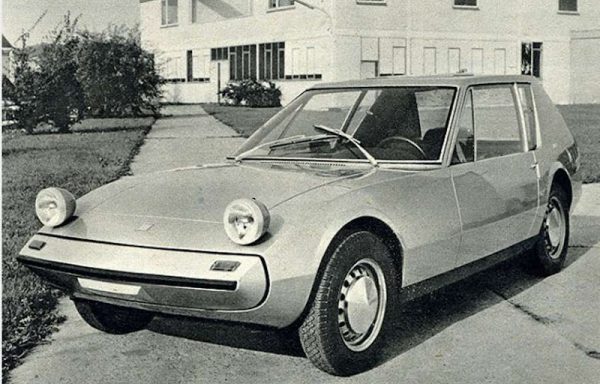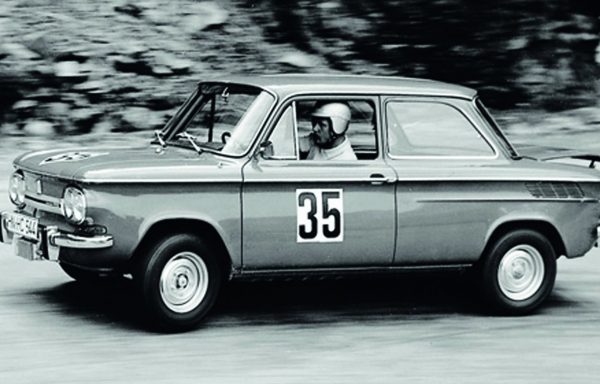The NSU TT, introduced in 1965, was a groundbreaking compact car that combined sportiness with practicality, quickly becoming a favorite among driving enthusiasts. With its sleek design and agile performance, the TT showcased NSU’s commitment to innovation and marked a significant shift in the brand’s approach to small cars, setting new standards in the automotive world.
The NSU Prinz TT was a sporty and performance-oriented version of the NSU Prinz series, designed for drivers seeking more power and agility. Launched in 1965, it quickly gained a reputation for its compact size, powerful engine, and nimble handling, making it a favorite among racers and enthusiasts. The Prinz TT, alongside the later TTS variant, cemented NSU’s place in motorsports, especially in hill climbs and touring car competitions.
Historical Background
The NSU Prinz TT was based on the standard NSU Prinz 1000 but came with a series of performance upgrades aimed at creating a more competitive and dynamic vehicle. The TT was born out of NSU’s desire to offer a faster, sportier version of the Prinz, suitable for both everyday driving and weekend racing. This model was instrumental in establishing NSU as a serious competitor in the compact car racing scene across Europe.
The Prinz TT quickly found success in racing, where its low weight, rear-engine layout, and responsive handling made it competitive against much larger and more powerful cars. The car’s popularity among racers led to a variety of aftermarket modifications, further enhancing its status as an iconic racing machine.
Technical Specifications
The NSU Prinz TT was engineered to deliver more power and performance than the standard Prinz models, with improvements to the engine, transmission, and suspension. Here’s a detailed breakdown of its specifications:
- Displacement: 1,177 cc
- Compression Ratio: 9.0:1
- HP Output: Approximately 65 hp at 6,000 rpm
- Torque Output: Around 9.0 kg/m at 3,500 rpm
- Transmission: 4-speed manual
- Length: 3,620 mm
- Width: 1,475 mm
- Height: 1,325 mm
- Weight: 700 kg
- Wheelbase: 2,200 mm
- 0-100 km/h: Approximately 12 seconds
- Top Speed: 150 km/h
Design and Mechanical Features
The Prinz TT shared its fundamental design with the Prinz 1000 but received a number of performance upgrades, making it a sharper, faster version of its sibling. It was compact yet powerful, designed for drivers who valued both speed and maneuverability.
- Engine Performance:
- The TT’s 1,177 cc inline-four, air-cooled engine was a larger and more powerful version of the standard Prinz engine. The increased displacement, combined with a higher compression ratio, allowed the TT to produce a significant jump in horsepower, making it one of the more powerful compact cars of its time.
- The engine’s power output was impressive for a car of its size, allowing the TT to deliver strong acceleration and a lively driving experience.
- Suspension System:
- Front Suspension: The TT was equipped with MacPherson strut front suspension, providing improved stability and handling on winding roads.
- Rear Suspension: The rear swing-axle suspension was optimized to handle the increased power output, although it could still be prone to oversteer, especially in high-speed cornering.
- Braking System:
- To accommodate its higher speed and power, the TT was equipped with disc brakes at the front and drum brakes at the rear. This setup provided a noticeable improvement in stopping power, enhancing the car’s safety and handling under aggressive driving conditions.
- Body and Interior Design:
- The TT’s body was based on the compact, lightweight Prinz 1000, with minor aesthetic adjustments that included sportier styling cues. It retained the Prinz’s classic shape but included unique details that made it easily recognizable.
- Inside, the Prinz TT was functional and driver-focused. It featured a simple dashboard layout with essential gauges, providing the driver with clear information on engine speed and temperature, which were critical during racing or spirited driving.
Racing Success and Modifications
The NSU Prinz TT became a popular choice for both amateur and professional racing, particularly in Europe. The car’s low weight, strong engine, and responsive handling made it a formidable competitor in hill climbs, rallying, and touring car events.
Racers and tuners frequently modified the TT to enhance its performance further. Some common modifications included:
- Engine Tuning: Many tuners increased the compression ratio, upgraded carburetors, and improved exhaust systems to push the engine output even higher, often surpassing 80 hp.
- Suspension Upgrades: The TT’s suspension was often upgraded with stiffer springs, improved shock absorbers, and anti-roll bars to reduce body roll and improve handling on the track.
- Braking Modifications: High-performance TT models were sometimes fitted with four-wheel disc brakes to handle the demands of racing.
- Lightweight Components: Racers removed non-essential components from the car to reduce weight and further improve acceleration and agility.
Legacy and Impact
The NSU Prinz TT is remembered as a pivotal model that helped shape NSU’s reputation in motorsports. Its success on the racetrack inspired the later NSU Prinz TTS, which was even more performance-focused. Together, these models became beloved icons in the racing world, celebrated for their power-to-weight ratio, agility, and innovative rear-engine design.
Today, the Prinz TT is a highly sought-after collector’s item, particularly among fans of vintage racing. Its rarity, combined with its motorsport legacy, makes it a cherished piece of NSU history. The TT’s influence extended beyond NSU, inspiring other automakers to consider compact performance cars as viable options for both street and track use. For enthusiasts, the Prinz TT remains a symbol of NSU’s engineering prowess and racing heritage, embodying the brand’s commitment to creating small, powerful, and competitive vehicles.




